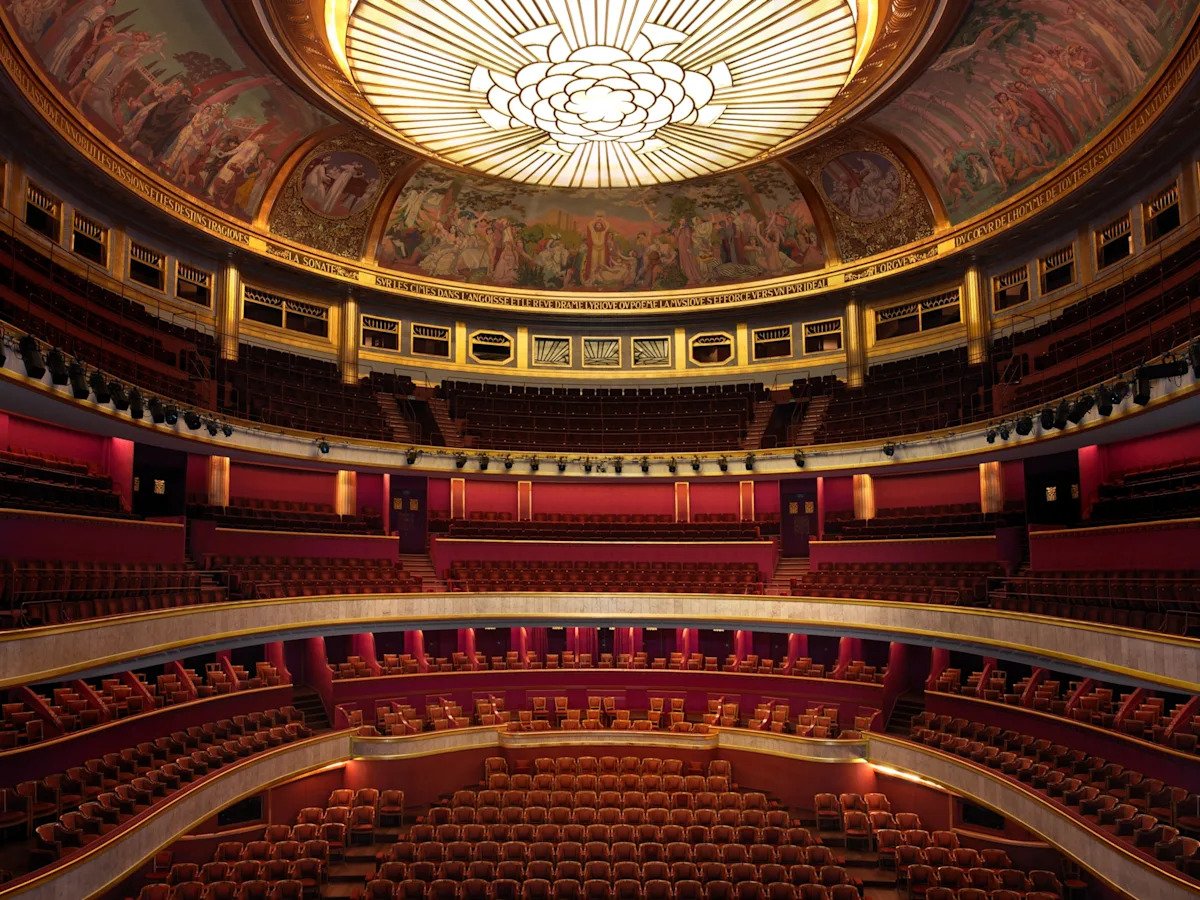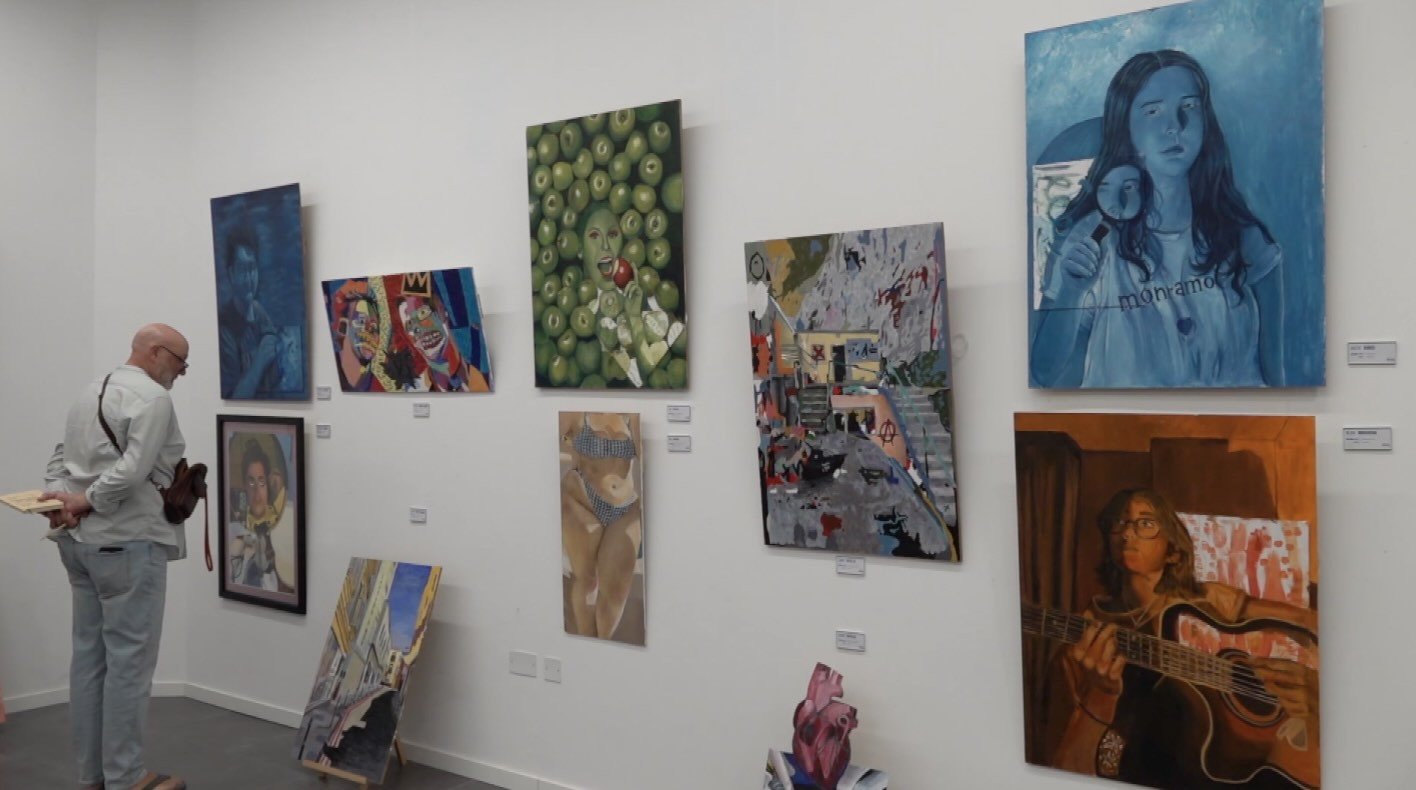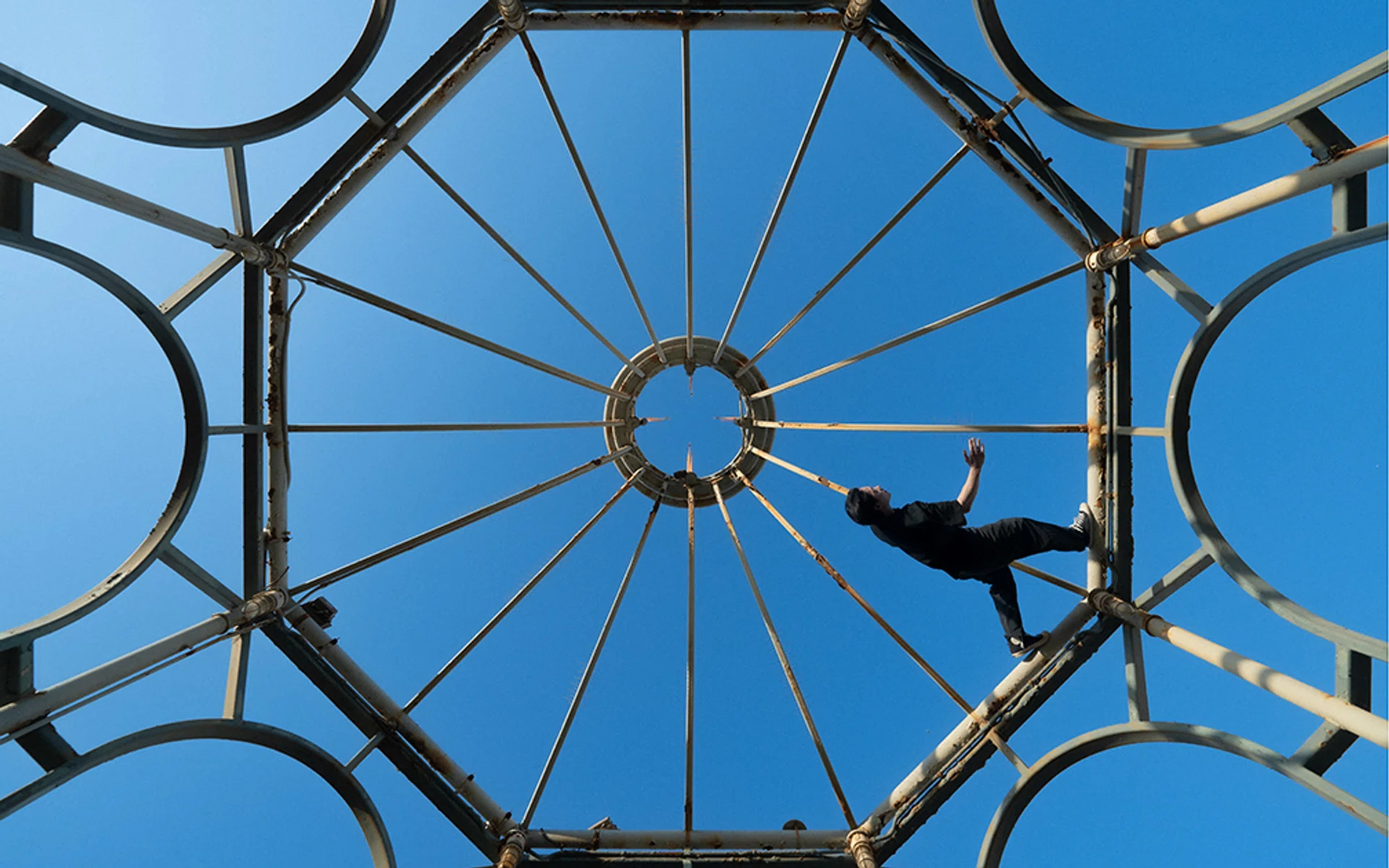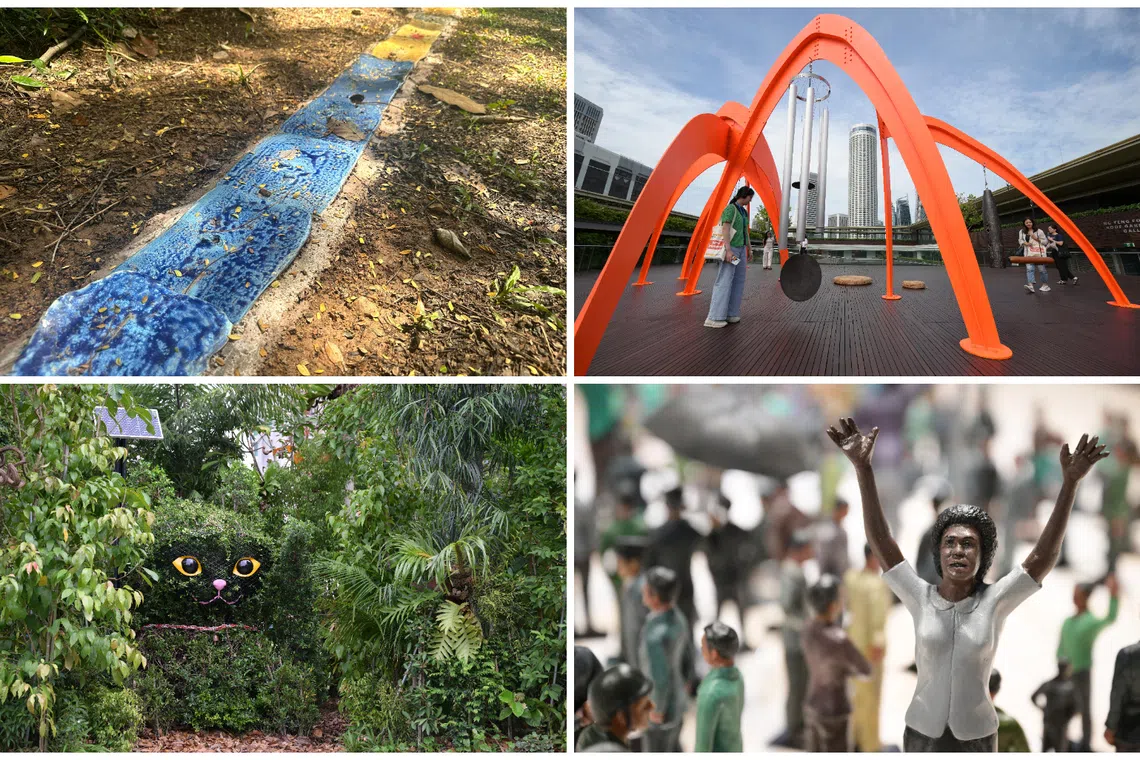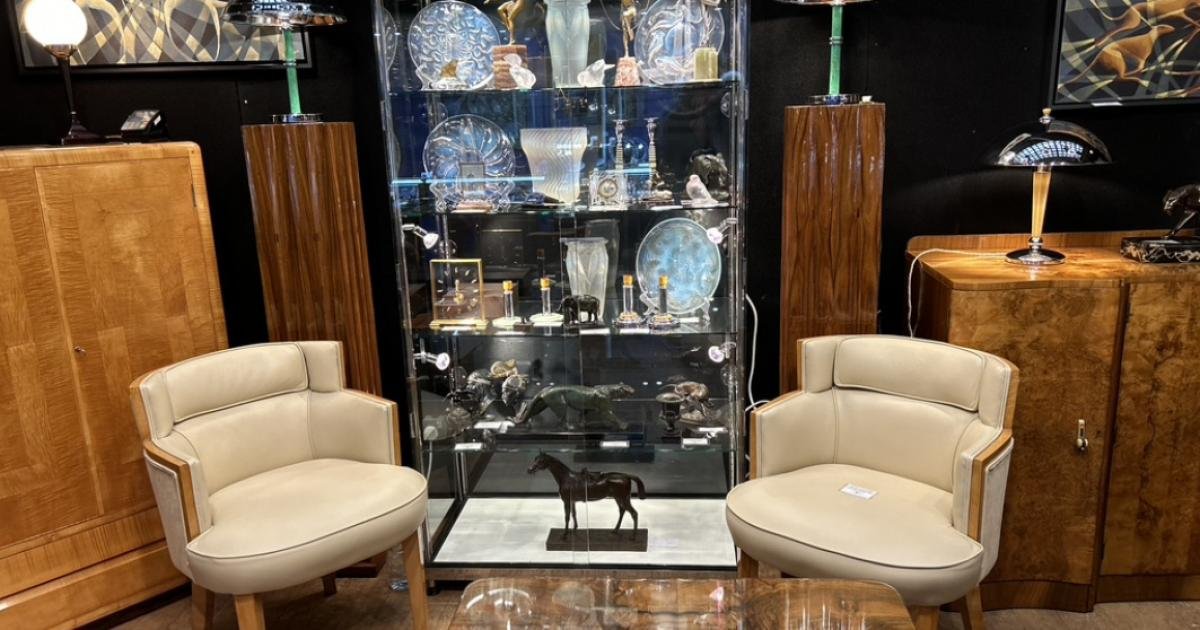What do the Chrysler Building (New York), Palais de Chaillot (Paris), and Christ the Redeemer Statue (Rio de Janeiro) have in common? As bold icons of art deco, they illustrate the far-flung influence of an architectural and design style that originated in Paris exactly 100 years ago.
In 1925, the sensational, six-month event known as the Paris International Exposition of Modern Decorative and Industrial Arts took place in ephemeral pavilions along the Seine. Postponed three times because of World War I, this highly anticipated expo sought to showcase French craftsmanship, design, and technological advancement. Not without its political motives in the face of post-war economic instability, the state-sponsored event also had a commercial side, with department stores showing off their wares, couturier Paul Poiret using moored barges as fashion showrooms, and carmaker Citroën advertising its name in lights on the Eiffel Tower—a first-time feat by electrical engineer Fernando Jacopozzi.
Big-name architects like Le Corbusier, Henri Sauvage, and the Perret brothers constructed dazzling and daring pavilions. “Two in particular demonstrate the diversity of art deco at this period,” says Bénédicte Mayer, curator at the Cité de l’Architecture et du Patrimoine. “The Information and Tourism Pavilion by Robert Mallet-Stevens, a modernist model with a clocktower that would be copied in the period’s constructions, and Jacques-Émile Ruhlmann’s Collector’s Pavilion.” Here, the renowned designer created a sumptuous universe for an imaginary collector in collaboration with nearly 50 artists.
A smashing success, the event drew more than 15 million visitors, including a delegation of Americans who would take design ideas back across the Atlantic. Wowed visitors could even tour the expo in the world’s first electric car, manufactured by Renault. No vestiges of the event are left in Paris today. But the new style—characterized by geometric forms, stylized ornamentation, and a celebration of modernity—would spread throughout the world, from Mumbai to Miami, from Shanghai to Napier.
“Art deco is often perceived as an art for the rich, because of some decorators’ use of refined materials like Macassar ebony and ivory,” says Mayer. “But really, it’s a complete art, bringing beauty and modernity into people’s everyday lives.” Department stores played a big role in diffusing these values to the greater public, democratizing art deco, with dedicated, affordable product lines.
The term “art deco” would not be coined until 1966, when Paris’ Musée des Arts Décoratifs (MAD) organized an exhibition called “Les Années 1925. Art déco. Bauhaus. Stijl. Esprit Nouveau.” A champion of the style from the very get-go, the museum purchased furniture and objects directly from the era’s artists to amass a superb collection that’s considered the world’s largest today. “That exhibition was a milestone because art deco had been forgotten, and would slowly be rediscovered,” explains curator Anne Monier Vanryb.
(Paris’s Centre Pompidou is closing—here’s where to visit instead)
Celebratory museum exhibits
To celebrate the centennial, the Cité de l’Architecture and MAD will stage complementary exhibits starting in October. The architecture museum will recreate the 1925 exposition through its rich archive of architectural designs and a virtual maquette of the pavilions.
The museum’s home, the Palais de Chaillot (1937), is an art deco triumph, its grand wings flanking the Trocadéro esplanade overlooking the Eiffel Tower. Architect Jacques Carlu imported an American influence to the design. “The Palais de Chaillot represents the art deco style that went to the United States, was Americanized, and then returned to Paris,” says Mayer.
At MAD, the “100 Years of Art Deco” exhibit will celebrate the many facets of a complex style powered by a diversity of artists. “We will also show the major contemporary reinterpretation of art deco, the new Orient Express train, in dialogue with its 1920s counterpart,” says Vanryb.
Occupying a wing of the Louvre complex, the museum is a stunning backdrop for an art deco immersion, including entire rooms from Jeanne Lanvin’s apartment. “Among the masterpieces in our collection, the most wonderful is André Groult’s shagreen chiffonnier,” says Vanryb. The permanent art deco galleries will reopen in late 2026.

The Théâtre des Champs-Elysées was the first art deco building in Paris. Photograph by Olaf-Daniel Meyer, Courtesy of Théâtre des Champs-Elysées
The first art deco building in Paris
A cultural trailblazer since opening in 1913, the Théâtre des Champs-Elysées was where Igor Stravinsky scandalized the audience with The Rite of Spring premiere, and where Josephine Baker first performed her “danse sauvage” (1925). The architecture itself—constructed in reinforced concrete by the Perret brothers—was art deco avant la lettre: The style is generally dated to post-World War I. Sculptor Antoine Bourdelle created the facade frieze, while artist Maurice Denis painted the cupola ceiling in the Italian-style theater.
Programming today is a melange of classical concerts, opera, ballet, and contemporary shows.

France. Paris. Rue Franklin apartments by Augueste Perret Photograph by PRISMA ARCHIVO, Alamy Stock Photo

The 25 bis Rue Franklin apartment building in Paris, designed by Auguste Perret between 1903 and 1904, is a landmark of early 20th-century architecture. The building features concrete frame construction and decorative ceramic tiles, showcasing the architectural innovations of Perret’s modernist style. Photograph by Alamy Stock Photo
Explore architectural landmarks
Encompassing the former villages of Passy and Auteuil—that were incorporated into the city of Paris in 1860—the 16th arrondissement is populated with remarkable art deco buildings. Guillaume Le Roux of Le Vrai Paris leads insightful walking tours, starting at the Place du Trocadéro. On 25 rue Benjamin Franklin is a revolutionary, art-deco precursor with an elaborate floral facade (Perret brothers), and number 17 shows off horizontal bow windows and decorative vertical lines of white earthenware (Marcel and Robert Hennequet).
“One of my favorite art deco buildings is 13-17 rue Raynouard with a garden overlooking the Seine,” says Le Roux. “It was built by Marcel Julien and Louis Duhayon, the duo behind Le Royal Monceau and the Plaza Athénée hotels. And 21-25 rue Raynouard has a façade inspired by ocean liners with stained-glass windows by the great Louis Barillet.”
Museum-hop in art deco masterpieces
A legacy of the 1937 international exposition, the Palais de Tokyo is a monumental, Seine-side palace decorated with art deco friezes. It’s home to two museums: The Palais de Tokyo, Europe’s largest contemporary arts center, and the Musée d’Art Moderne de la Ville de Paris, where Raoul Dufy’s glorious “La Fée Electricité” encompasses an entire room. The exuberant, technicolor fresco depicts the history of electricity. Downstairs, don’t miss the gold lacquered decorative panel created by Jean Dunand for the ocean liner Normandie. “Les Sports” was inspired by the ancient Olympic Games.
Across town in the 12th, the Palais de la Porte Dorée is an art deco monument that was built for the Colonial Exhibition in 1931. The extraordinary facade bas-relief, likened to a “stone tapestry,” was sculpted by Alfred Auguste Janniot in two years. Inside the palace, the fresco by Pierre-Henri Étienne Ducos de la Haille is laden with colonial attitudes prevalent at that time. The on-site National Immigration History Museum explores the importance of immigration, and the complicated history of colonialism.
Where to eat
A legend on the place de la Bourse, Le Vaudeville—an all-day brasserie—serves seafood and French classics in sumptuous surroundings. In Montparnasse, a hub for artists and writers in the ‘Roaring Twenties,’ La Coupole shows off head-turning art deco interiors: Painted columns, mosaic floors, mirrors, and a sculpture centerpiece. Near the Arc de Triomphe, a brilliant blue mosaic marks Prunier restaurant, unveiled in 1924 by the pioneering caviar brand. Step inside and you’ll be struck by the sea-themed decorative elements by architect Louis-Hippolyte Boileau: The gold! The glass! The onyx marquetry!
(6 ways to experience the Paris of the Roaring ’20s)
Where to shop
The genesis of the grand magasin (department store) may have been the 19th century, but the concept positively flourished in the 1920s. Architects were commissioned to imbue the stores, immortalized by Émile Zola as “temples of commerce,” with au courant decorative elements. Le Bon Marché’s curved facade is a lasting ode to art deco, as is Galeries Lafayette with its René Lalique bow windows dating from the 1932 redesign by oceanliner architect Pierre Patout. Printemps, refurbished in art deco style after a 1921 fire, is a destination in its own right for the gorgeous glass dome and grand staircase.
Stay overnight in an art deco hotel
From their blow-out gastronomic restaurants to their gilded lobbies, the city’s so-called palace hotels represent a surfeit of superlatives. Among these grandes dames, Le Bristol (1925), Four Seasons Hotel George V (1928), and Hôtel Plaza Athénée (1913) showcase art deco aesthetics, including a wrought-iron elevator grille with geometric motifs at Le Bristol.
Swim in art deco glory at Hotel Molitor, a legendary pool complex, or book the “Unlocking Art Deco” guided tour of Paris at the Hotel Prince de Galles (1929)—styled with mosaics, stained glass, and wrought-iron fixtures.
Or relive the 1925 exposition at the art deco standout whose name recalls Ruhlmann’s famous pavilion. Opened in 2004, the Hôtel du Collectionneur was decorated by renowned designer Jacques Garcia. With sculpted friezes, large-scale murals, and a grand staircase inspired by transatlantic liners, it’s an homage to the century-old style that’s seeing a resurgence today.
(How Black culture has shaped Paris—and where to experience it)
A Franco-American writer based in Paris, Mary Winston Nicklin is a regular contributor to National Geographic. Most recently, she wrote the Louis Braille biography in the July/August 2025 issue of National Geographic History.

